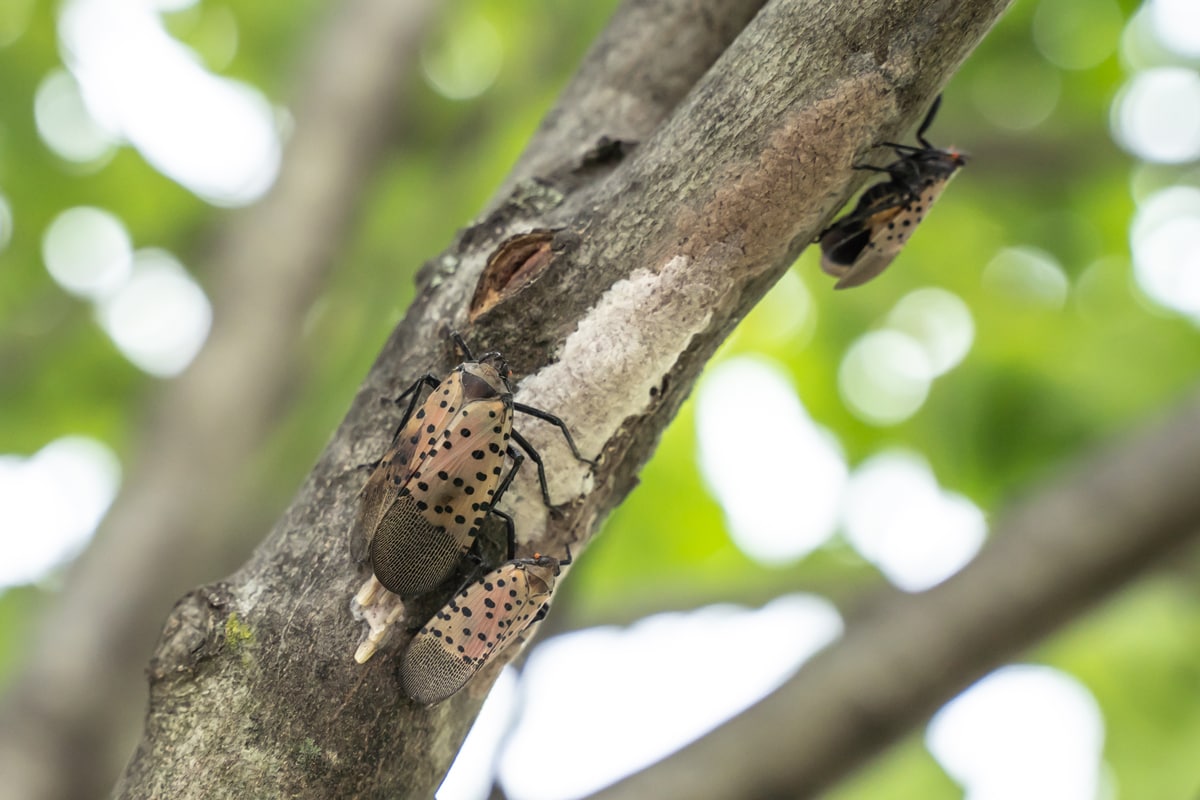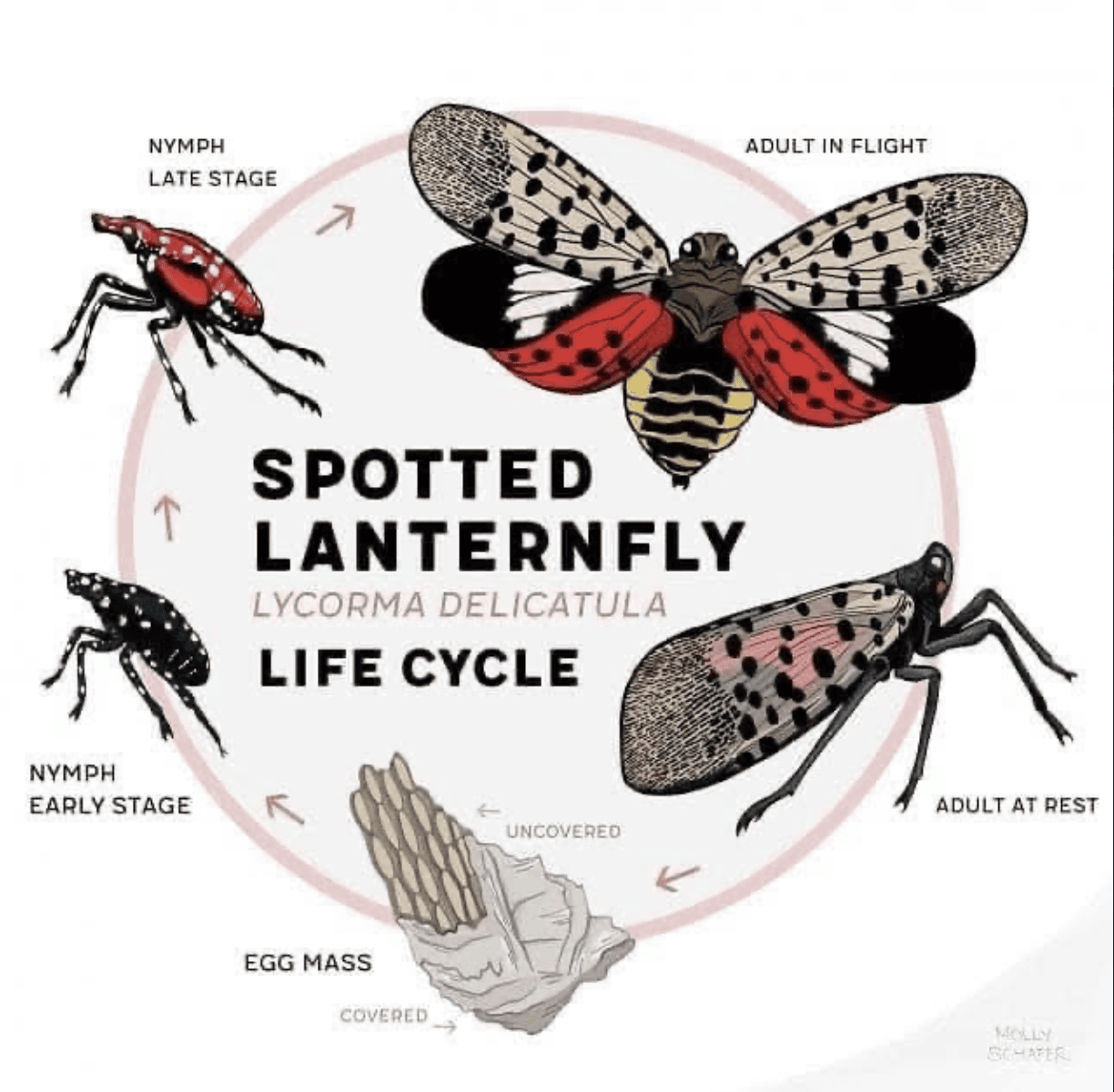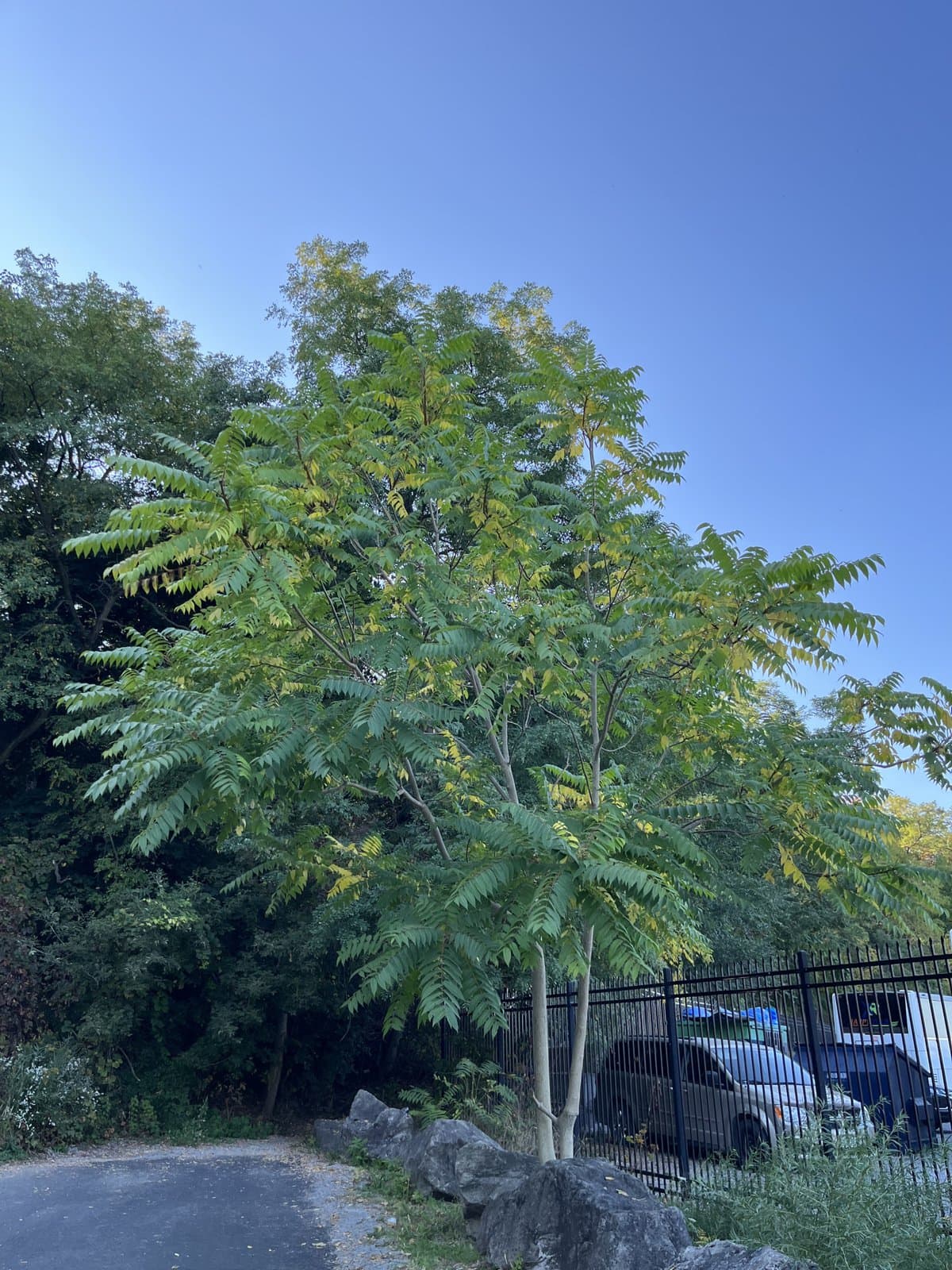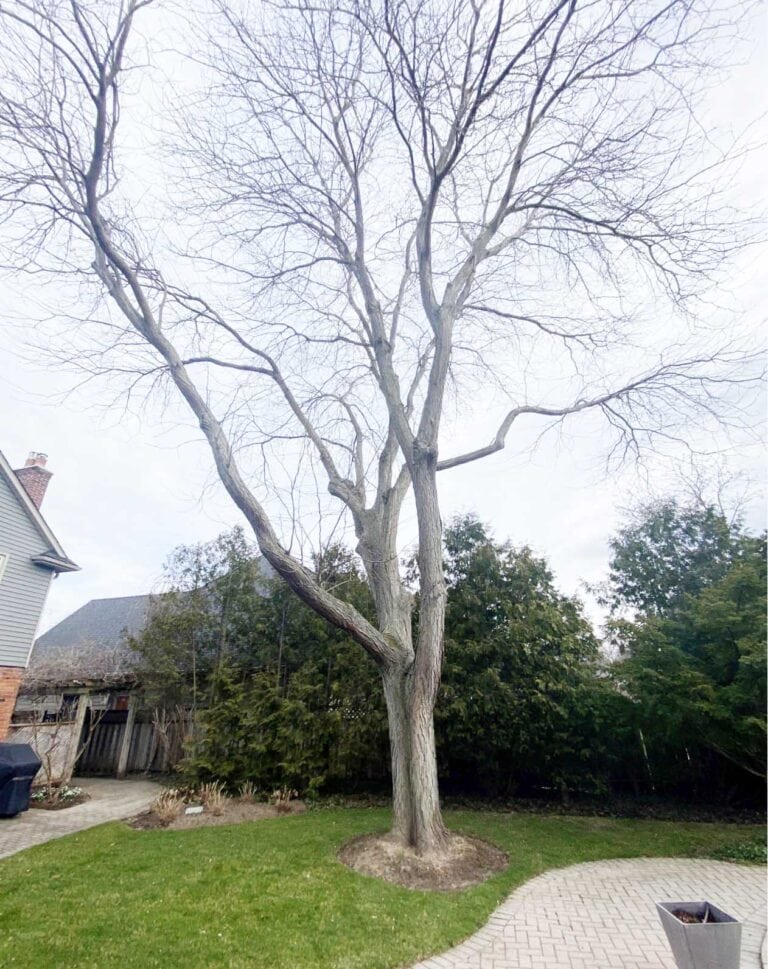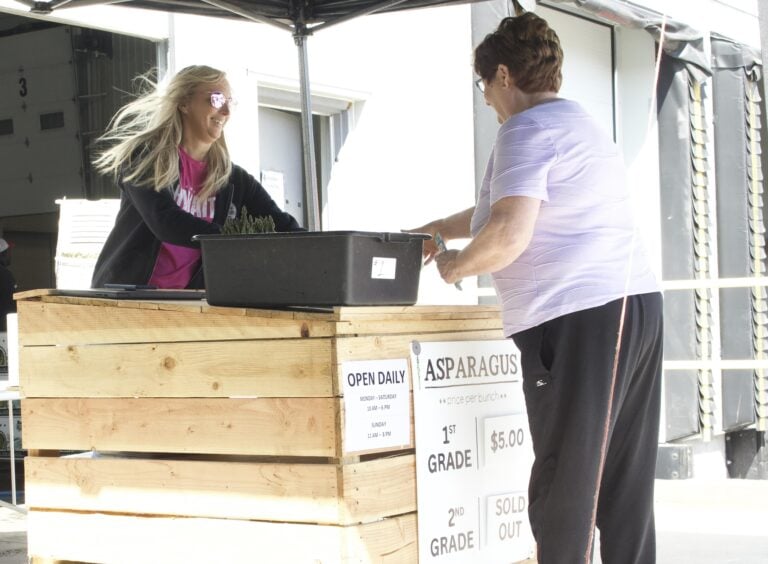Insect can destroy vineyards and wreak havoc on agricultural sector
The highly invasive spotted lanternfly, which has the power to destroy entire vineyards, now has been reported in several Niagara locations and is prompting a huge concern for the region’s agricultural industry.
“There have been multiple sightings reported in Niagara Region,” Megan Nesseth, a spokesperson for the Canadian Food Inspection Agency told The Lake Report.
As a result, “the CFIA is intensifying surveillance in this area,” she said via email.
“An education campaign by the CFIA is underway to raise public awareness of the spotted lanternfly, including signs and symptoms of this pest, how it spreads and what can be done to prevent its introduction into Canada,” she said.
The agency wants the invader captured and kept alive, and is advising people to spot it, snap it and catch it — but not to kill it.
Last Friday, the spotted lanternfly was seen in Niagara in a shipment of orchids that had arrived from Ohio, NOTL master gardener Betty Knight told The Lake Report.
The person who recognized it, a worker at a floral distributor in Fonthill, advised his boss, who contacted the CFIA.
The insect had been killed by the time staff from the agency arrived, so the sighting is not considered official.
Even though the highly invasive insect has been seen, the incidents don’t count as detections in Canada, because the CFIA hasn’t collected a live sample of the bug to be able to confirm it.
In an advisory on Saturday emailed to members of NOTL council and parks supervisor J.B. Hopkins, Knight said the Canadian Food Inspection Agency was on the scene within an hour.
“I know monitoring stations have been set up throughout (Niagara-on-the-Lake), but the town needs a plan to deal with this pest,” Knight told councillors.
She noted that, as The Lake Report previously reported, one of the main hosts for the insect is the tree of heaven.
“I am aware of three large swaths of tree of heaven: at the entrance to the heritage trail, at Fort George at the base on Ricardo Street and at the corner of St. Saviour’s Church in Queenston, where the road goes down to the river. I’m sure there are more,” she said.
Removal of tree of heaven involves more than simply cutting it down and now is the best time of year to deal with it, Knight advised.
The Town of NOTL will be developing an invasive plant management plan in 2024, an official said. The first step will be to take inventory of invasive species in town and then determine how to address the situation.
“It is important to note that cutting down these trees would not kill them,” spokesperson Marah Minor said. “A persistent regimen of chemical treatments” is required.
*****
Two weeks ago, one of the insects flew into someone’s car when they were crossing the Peace Bridge in Fort Erie, Knight said.
And a week before that, The Lake Report has learned that one was discovered just down the QEW from Niagara-on-the-Lake – in Oakville.
A user by the name of Tanya Campbell snapped a photo of the bug on Sept. 13 on Ford Drive in Oakville and uploaded it to iNaturalist.
In that case, a photo of the insect was given to the agency, but it wasn’t available for collection, said Diana Mooij, a program specialist with the CFIA.
“As the detection of a pest is an official CFIA record, we need to confirm the identification of the pest and its location in the environment, which we cannot do with only a photo,” she said via email.
And Emily Posteraro, the program development co-ordinator for the Invasive Species Centre, noted, “A detection is a live, spotted lanternfly confirmed by the CFIA in the Canadian environment,” said
In an interview on Monday, Posteraro said her organization did not yet have any information on the Fonthill sighting but she noted this is mating season for the insect.
While cold weather by about November should kill off the adult flies, any eggs laid in the fall can survive till next spring, she emphasized.
The inspection agency has been monitoring the location of the Oakville sighting but staff hasn’t seen any indications of the bug, and there’s a chance they won’t.
“Even when they do not result in a confirmed detection, reports of spotted lanternfly sightings help inform when and where additional monitoring may be needed,” Mooij told The Lake Report.
Posteraro said it makes sense for the agency to prefer having the insect alive and in its possession, rather than a photograph.
Theoretically, anyone could send a photo in, so the distinction is important, she said.
She doesn’t believe this process takes away from the work being done to halt the spotted lanternfly’s arrival in southern Ontario.
She’s been in touch with the Town of Oakville, which has been surveying its tree of heaven trees, the preferred host for the spotted lanternfly.
The Invasive Species Centre is also doing its part by providing free webinars and resources for the community to learn about the spotted lanternfly, said Posteraro.
The centre, a non-profit agency based in Sault Ste. Marie, works to prevent the introduction of invasive species in Canada.
“We’re always ready for a detection to be announced,” she said.
The CFIA also has been increasing detection efforts, especially in locations where sightings have been reported.
The colourful insects are from southwestern Asia and love to feed on more than 100 different species of plants.
Since the insect’s initial discovery in Pennsylvania’s Berks County in 2014, it has spread, wreaking havoc on numerous vineyards.
Besides the tree of heaven, grape vines and black walnut trees are among its preferred host plants.
With the abundance of vineyards in NOTL and across Niagara, the introduction of this species into the region could lead to environmental devastation.
There have been multiple sightings reported on iNaturalist of dead spotted lanternflies in Ontario, Quebec and Nova Scotia.
The bug has multiple life stages and at this time of year is in its adult phase, which is the easiest to spot, said Posteraro.
The insect is about three centimetres long and while resting its wings are a tan colour with black spots. While in flight, it has a bright combination of red, black and white with black spots.
In its adult phase, the insect can cause the most damage as it uses its razor sharp teeth to drill into trees or grape vines, and suck out the sap.
If sighted, people are encouraged to snap a photo of it and catch it alive — much different to the “stomp on it” method in the United States.
“But because we have yet to actually confirm a detection in Canada, we do want that specimen to be kept (alive),” said Posteraro.
She said the Oakville sighting is a reminder that it’s hard to know where the bug will show up.
The focus has been on wine-producing regions near the border, due to infestations in Buffalo and Michigan, she said.
Focusing on Oakville was not necessarily at the top of their list of anticipated locations.
“It reminds us that just with trade and things like that, it’s very easy for it to show up anywhere,” Posteraro said.
“We have to be ready for that.”
Sightings can be reported online to the Canadian Food Inspection Agency at inspection.canada.ca or the Invasive Species Centre at invasivespeciescentre.ca.



